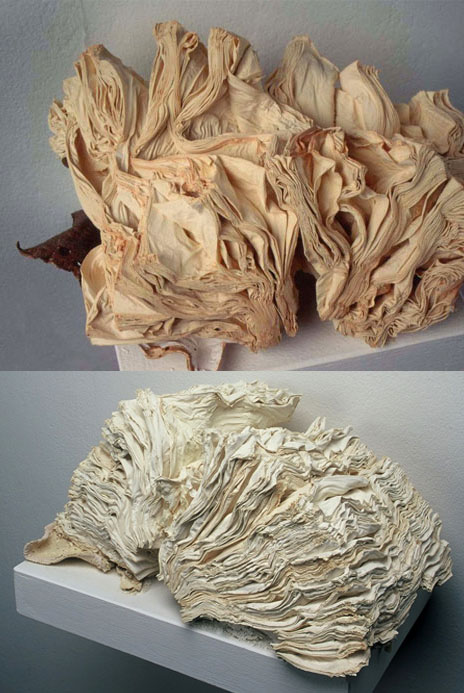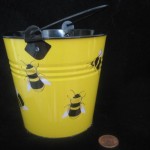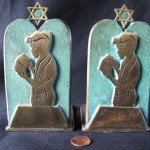Significant Objects has many obvious virtues — but is it eco-friendly, too?
In the early days of trying to drum up traffic, I brought our project to the attention of several eco-blog types. Why? Because we figured that in converting near-worthless thrift-store junk into valuable and meaningful objects, our project was in effect upcycling with words.
I guess I did a bad job making this case, because none of the eco-bloggers bit, and it beats me why that is. Okay, so we’re not converting metric tons of spent plastic water bottles into hip t-shirts or somesuch. But surely if a sculptor incorporated some of the very same doodads you’re used to seeing on this site into a physical work of art and displayed it in a gallery, anybody would recognize that action as redeeming a bit of borderline junk with no particular use-value. Aren’t our writers doing the same?
Probably as a result of this I’ve been interested lately in examples of upcycled art and design that uses one specific form of object as its base material: the book.
This rather astounding roundup at Dark Roasted Blend (which I used to find the images for this post; click on any picture to go to the artist’s site) will provide you every example you need of books converted into pure objects; whatever words they contain hardly matter.
But I’m not here to rattle on about the special-ness of physical books and whatnot, as there are plenty of people around doing that already. And besides, a lot of these book-repurposings are pretty cool. I respect the artistry and craft involved. Speaking of artistry and craft, what I am here to do is say it loud and proud: The writers who’ve been participating in the Significant Objects project are also deploying their artistry and craft in a way that redeems borderline junk with no particular use-value. Let’s face it, much of our inventory was acquired when it was a step away from landfill. And piece by piece it’s been converted into a series of conversation-starting keepsakes, displayed proudly in homes from coast to coast.
Would it be awesome if the many advocates of repurposing quotidian objects into art objects would recognize that this is precisely what we’re up to over here, and give us a public high-five? Yes it would. But meanwhile: Here is yet another rationale to bid: Yes, Significant Objects is eco-friendly!











Word.
Thanks for including my work in your piece, Rob.
I think of my work as a form of constrained writing in that the titles are all chosen to work together in my shelves. You can think of them as a three-dimensional haiku in that the form is fixed–it’s a bookshelf– and I am trying to pack in as much meaning and humor as possible, given the constraints of the medium.
Like Significant Objects, my pieces are a response to the specificity of the books I collect, not just a riff on books as lumber, though I’ve done that, too. In fact, the idea occurred to me after reading Nicholson Baker’s essay, “Books as Furniture,” in the New Yorker. (He did not mean to be taken literally.) So perhaps you have brought the meme full circle here, adjacent to his slice about a meat thermometer.
–Jim
Hi, I noticed my work up here on your site and I read about your project–most interesting
Pingback: The idea of the book, continued some more
Pingback: S.O. cross-post: Upcycling with words
Pingback: Books: the idea, cont’d: As “furniture”
Pingback: Books, the idea, cont’d: Book for hiding a notebook, etc.